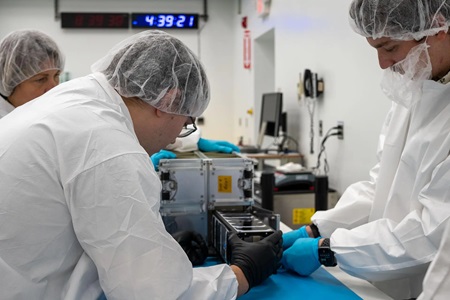
NASA has announced a new round of opportunities for CubeSat developers to create spacecraft for upcoming launches through the agency’s CubeSat Launch Initiative (CSLI). CubeSats are a type of small spacecraft known as nanosatellites.
The CSLI offers space access to US educational institutions, certain non-profit organisations, and informal educational institutions such as museums and science centres. It also includes NASA centres focused on workforce development, like the Jet Propulsion Laboratory in southern California, and encourages participation from minority-serving institutions.
Jeanie Hall, CSLI programme executive at NASA Headquarters in Washington, said: “Working with CubeSats is a way to get students interested in launching a career in the space industry. NASA reviews applications for CubeSat missions every year and selects projects with an educational component that also can benefit the agency in better understanding education, science, exploration, and technology.”
Proposals must be submitted by 5 PM EST on November 15. NASA plans to announce selections by March 14, 2025, for flight opportunities between 2026 and 2029. Selection does not guarantee a launch, and applicants are responsible for funding the development of the CubeSats.
Selected CubeSats will be assigned a launch and deployment, either directly from a rocket or to low Earth orbit from the International Space Station. NASA mission managers will advise the CubeSat teams, ensuring technical, safety, and regulatory requirements are met before launch. Those selected will gain valuable experience in hardware design, development, and CubeSat operation.
Recently, eight CubeSat missions were launched on Firefly Aerospace’s Alpha rocket from Vandenberg Space Force Base in California on July 3. Among these were CatSat, built by University of Arizona students, testing a deployable antenna attached to a Mylar balloon, and KUbeSat-1 from the University of Kansas, testing a new method of measuring cosmic rays. This launch marked the first CSLI missions from Kansas and Maine.
Additionally, four CubeSats were sent to the International Space Station as cargo in a SpaceX Dragon capsule on March 21 aboard a Falcon 9 rocket from Cape Canaveral. These CubeSats are demonstrating and maturing technologies for solar power generation, gamma-ray burst detection, crop water usage measurement, and soil and snowpack moisture level determination.
CubeSats, measured in standardised units called “U,” are small enough to fit in the palm of your hand. They can be stacked to form larger, more capable spacecraft. A 1-Unit (1U) CubeSat is about 10 x 10 x 11 cm (3.9 x 3.9 x 4.5 inches). NASA has selected CubeSat missions from 45 states, Washington D.C., and Puerto Rico, launching about 160 CubeSats since the initiative’s inception.
The CubeSat Launch Initiative is managed by NASA’s Launch Services Programme based at Kennedy Space Center in Florida.












Add Comment